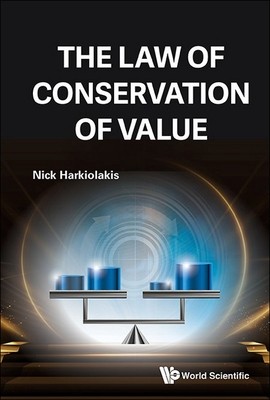
- We will send in 10–14 business days.
- Author: Nicholas Harkiolakis
- Publisher: World Scientific Publishing Europe Ltd
- ISBN-10: 1800617437
- ISBN-13: 9781800617438
- Format: 15.2 x 22.9 x 1 cm, kieti viršeliai
- Language: English
- SAVE -10% with code: EXTRA
Reviews
Description
This book discusses the concept of value in economics and proposes a framework for incorporating value as a conserved quantity. In physics, energy, momentum, and other variables are preserved throughout the interactions of bodies in closed systems. The economic variable of value follows the same principle and is preserved throughout transactions between agents. By treating value as a quantity that can be accumulated and exchanged among actors and as an encapsulation of economic variables like utility and labor, the law of conservation of value was developed.In the context of this book, value is anything that is significant to someone. In formal terms, value is the potential to act in an environment. It can equate to wealth in terms of possessions (clothes, houses, cars, money, etc.), physical health (the strength to accomplish something), intellectual potential (our intellectual capacity, knowledge, and skills), and emotional satisfaction (addressing our needs and self-actualization). Thus, value can be encapsulated as a conserved quantity throughout transactions. Marginal value and speed of marginal value are defined as derivatives of value and marginal value, respectively. Traditional economic statements are represented here as cycles of value wherein value is conserved. Producer-consumer dyads, shortage and surplus, and the potential of value for representing markets and the economy are explored. The role of the government in the economy is also explained through the cycles of value in which government is involved. Sustainable growth is ensured as an outcome of these cycles of value. The application of the law is demonstrated through practical examples exploring a variety of scenarios, for example, with value playing the role of capital or price in contexts of supply and demand.
EXTRA 10 % discount with code: EXTRA
The promotion ends in 23d.18:30:42
The discount code is valid when purchasing from 10 €. Discounts do not stack.
- Author: Nicholas Harkiolakis
- Publisher: World Scientific Publishing Europe Ltd
- ISBN-10: 1800617437
- ISBN-13: 9781800617438
- Format: 15.2 x 22.9 x 1 cm, kieti viršeliai
- Language: English English
This book discusses the concept of value in economics and proposes a framework for incorporating value as a conserved quantity. In physics, energy, momentum, and other variables are preserved throughout the interactions of bodies in closed systems. The economic variable of value follows the same principle and is preserved throughout transactions between agents. By treating value as a quantity that can be accumulated and exchanged among actors and as an encapsulation of economic variables like utility and labor, the law of conservation of value was developed.In the context of this book, value is anything that is significant to someone. In formal terms, value is the potential to act in an environment. It can equate to wealth in terms of possessions (clothes, houses, cars, money, etc.), physical health (the strength to accomplish something), intellectual potential (our intellectual capacity, knowledge, and skills), and emotional satisfaction (addressing our needs and self-actualization). Thus, value can be encapsulated as a conserved quantity throughout transactions. Marginal value and speed of marginal value are defined as derivatives of value and marginal value, respectively. Traditional economic statements are represented here as cycles of value wherein value is conserved. Producer-consumer dyads, shortage and surplus, and the potential of value for representing markets and the economy are explored. The role of the government in the economy is also explained through the cycles of value in which government is involved. Sustainable growth is ensured as an outcome of these cycles of value. The application of the law is demonstrated through practical examples exploring a variety of scenarios, for example, with value playing the role of capital or price in contexts of supply and demand.


Reviews